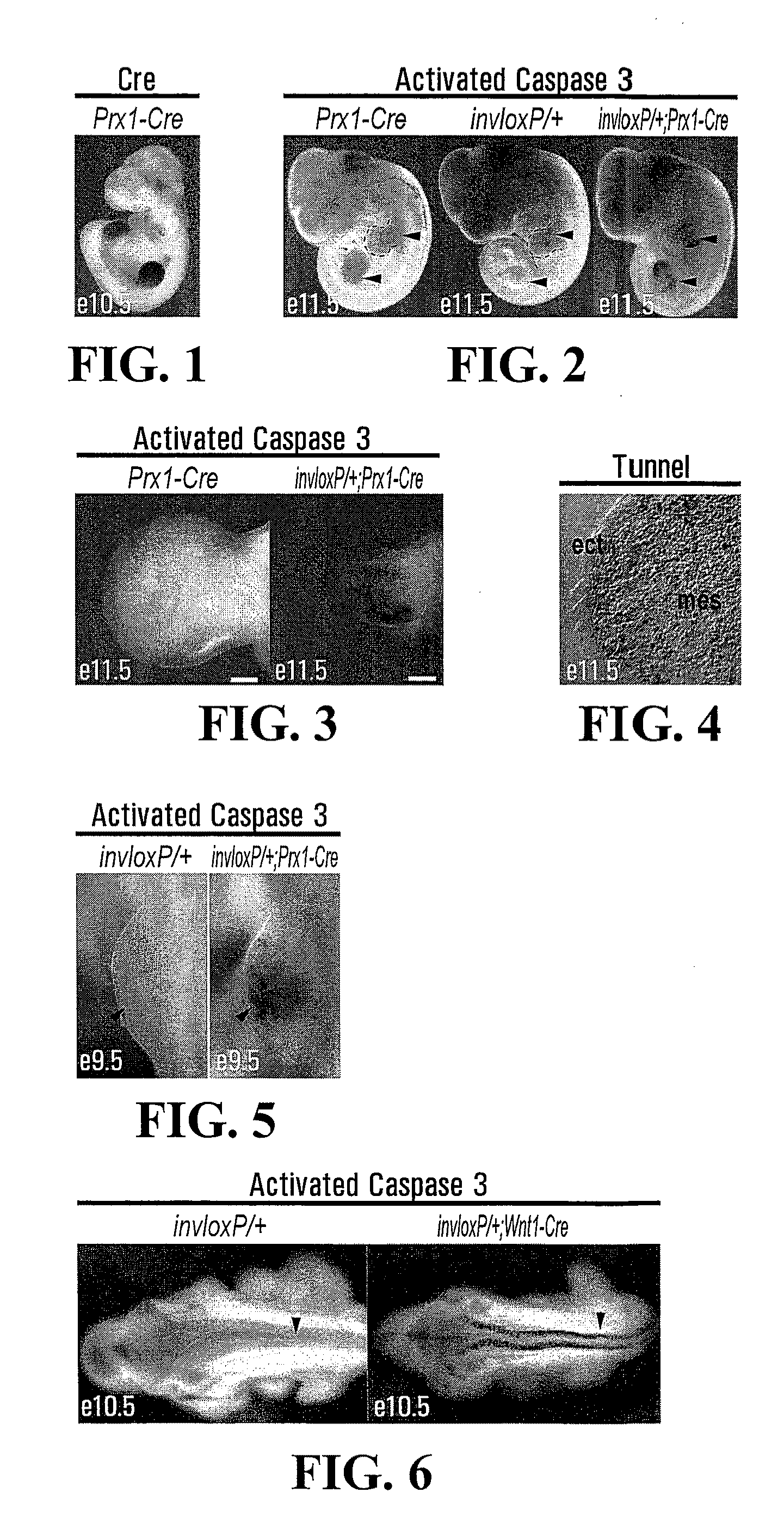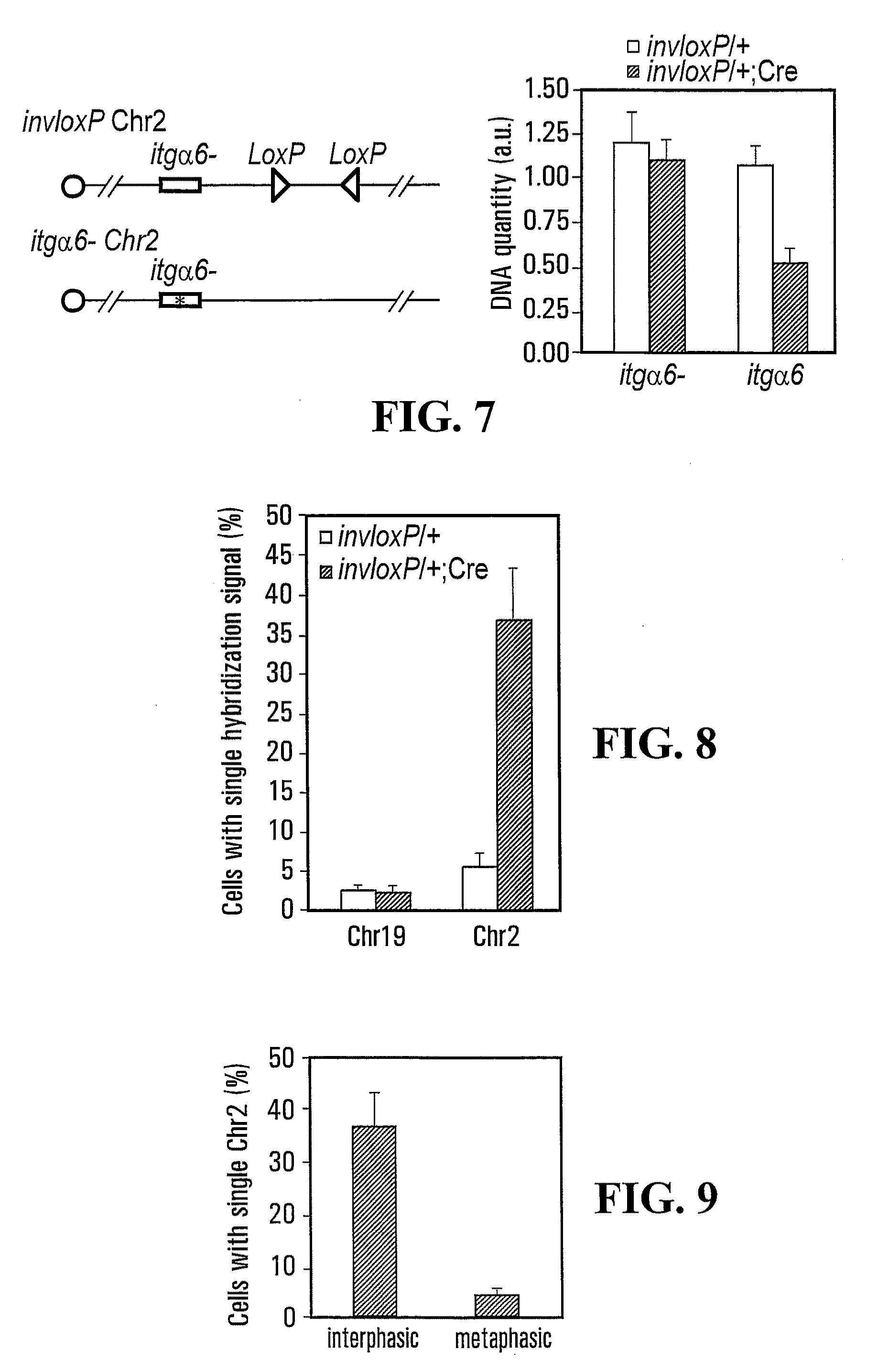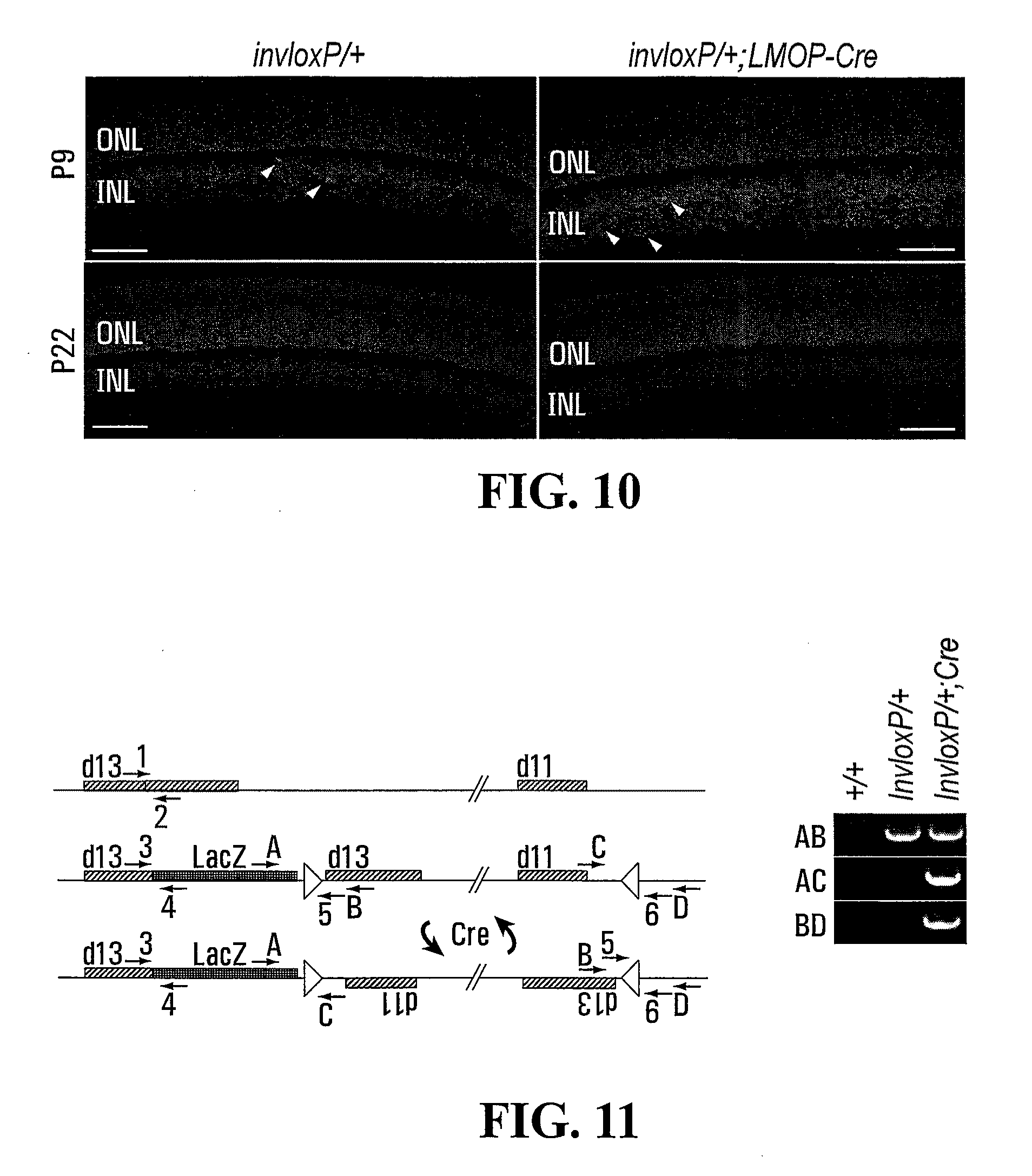Method for targeted cell ablation
a cell and ablation technology, applied in the field of targeted cell ablation, can solve the problems of non-specific cell destruction, the ablation of embryonic tissues cannot be achieved using, and the existing cell ablation techniques do not allow the specific death of proliferating cells versus non-proliferating cells
- Summary
- Abstract
- Description
- Claims
- Application Information
AI Technical Summary
Problems solved by technology
Method used
Image
Examples
example 1
[0143]Recombination Between loxP Sites with Inverse Orientation Induces Apoptosis
[0144]Recombination between loxP sites in inverted orientation has been proposed as a tool to induce a targeted loss of chromosome and monosomies in a tissue-specific manner (4), which would circumvent the embryonic lethality associated with constitutive autosomal monosomies (6). This approach is used herein to generate a tissue-specific monosomy of chromosome 2 (Chr2). A mice having a set of loxP sites in inverted orientation within the 5′ part of the HoxD gene cluster (referred to as invloxP hereafter) (7) was crossed to a mice carrying a Cre transgene expressed primarily in developing limbs (Prx1-Cre) (FIG. 1 and Ref. 6). It was found that limb buds of invloxP / +; Prx1-Cre embryos were severely reduced in size as compared to wild type ones. In contrast, embryos carrying only the invloxP allele or the Prx1-Cre transgene were indistinguishable from wild type embryos (FIGS. 2 and 3) and were used as cont...
example 2
[0146]TRIP Results in the Depletion of Genetically Defined Cell Populations
[0147]The present analyses revealed that TRIP resulted in widespread cell death within the Cre-expression domain. To assess the severity of this effect, the Z / EG reporter transgene, permanently expressing the Green Fluorescent Protein (GFP) in Cre-expressing cells and all their progeny (9) was used to label the Prx1-Cre lineage in both control (Z / EG; Prx1-Cre) and mutant (invloxP / +; Z / EG; Prx1-Cre) limb buds. Limb buds were dissected out from control and mutant embryos at 49-50 somite-stage and the total number of cells expressing the GFP was determined. Between 1,000 and 13,000 GFP positive cells remained per mutant limb bud while control buds contained about 470,000 GFP positive cells (data not shown) indicating that 48 hours after the onset of Cre expression less than three percent of the Prx1-Cre cell lineage remained.
[0148]In this specific, but non-limiting example, the DNA fragment flanked by the two lo...
example 3
[0150]Loss of the loxP-Carrying Chromosome Affects Cell Survival
[0151]Because recombination between cis-located loxP sites in inverse orientation could result in the elimination of the loxP-carrying chromosome (1, 3), it was investigated whether the induction of ectopic cell death was associated with chromosome loss. For this purpose, a chromosome quantification in limb bud cells was first performed. In order to distinguish the loxP-carrying Chr2 from its homologous counterpart, embryos were produced with one copy of Chr2 carrying the invloxP allele and a wild-type allele of integrin alpha 6 (Itgα6) and the other copy of Chr2 carrying a mutant allele of Itgα6 (12), with or without the Cre transgene (FIG. 7). Quantification by real-time PCR of the wild type versus mutant Itgα6 allele provided a means to establish the relative proportion of the loxP-carrying Chr2 versus its homologue. It was found that the wild type Itgα6 allele was almost 2-fold under-represented in invloxP / Itgα6−; P...
PUM
| Property | Measurement | Unit |
|---|---|---|
| pH | aaaaa | aaaaa |
| concentration | aaaaa | aaaaa |
| concentration | aaaaa | aaaaa |
Abstract
Description
Claims
Application Information
 Login to View More
Login to View More - R&D
- Intellectual Property
- Life Sciences
- Materials
- Tech Scout
- Unparalleled Data Quality
- Higher Quality Content
- 60% Fewer Hallucinations
Browse by: Latest US Patents, China's latest patents, Technical Efficacy Thesaurus, Application Domain, Technology Topic, Popular Technical Reports.
© 2025 PatSnap. All rights reserved.Legal|Privacy policy|Modern Slavery Act Transparency Statement|Sitemap|About US| Contact US: help@patsnap.com



